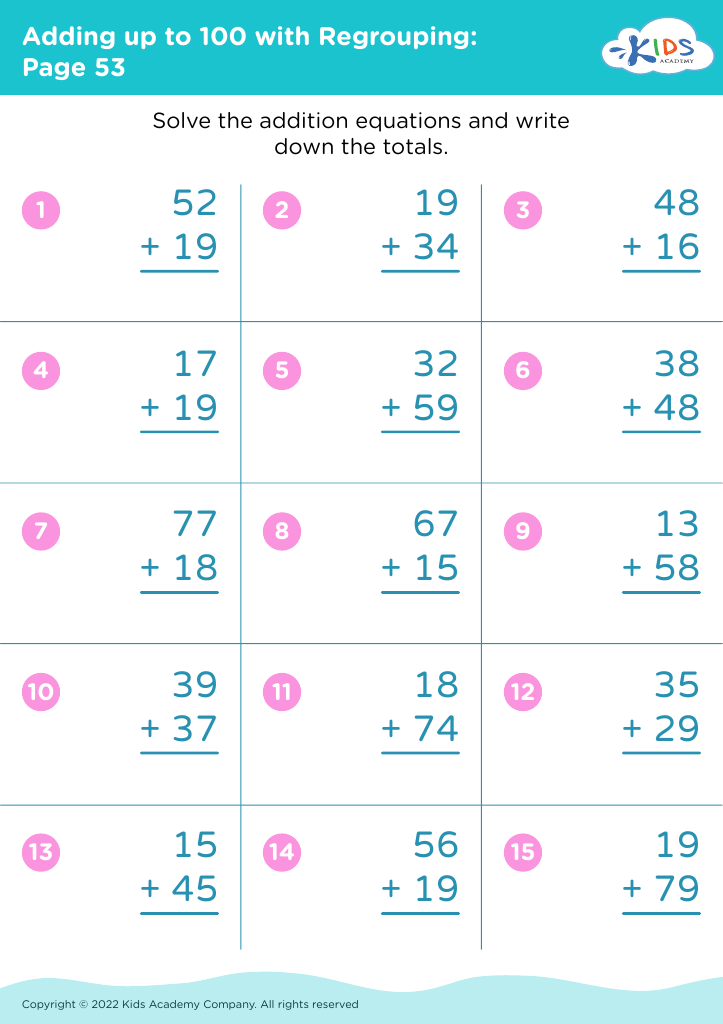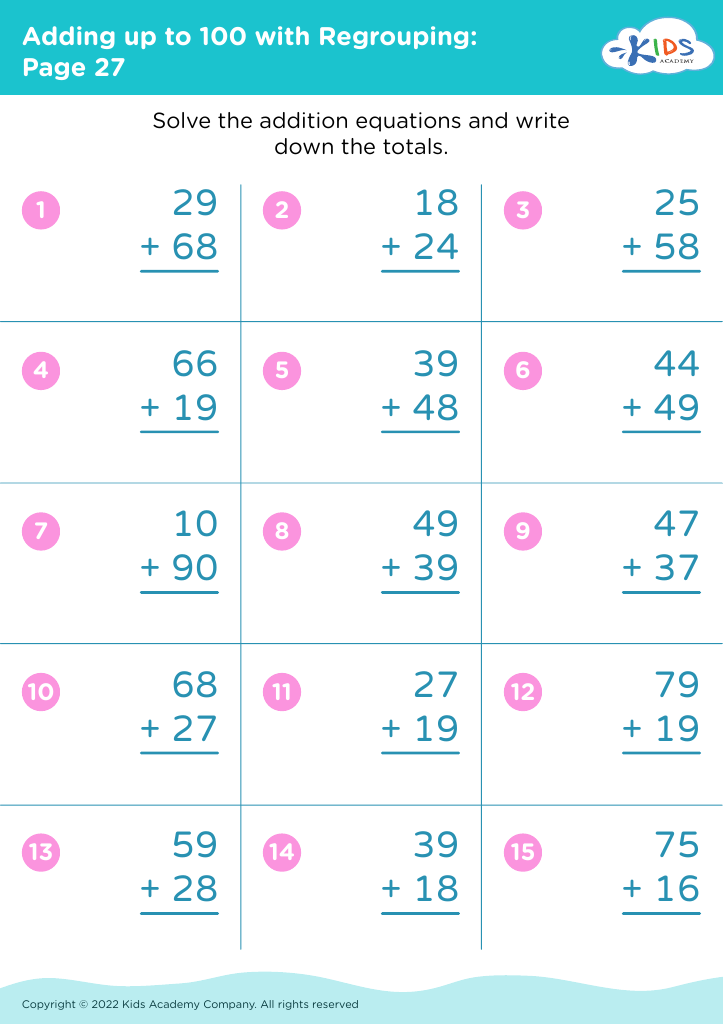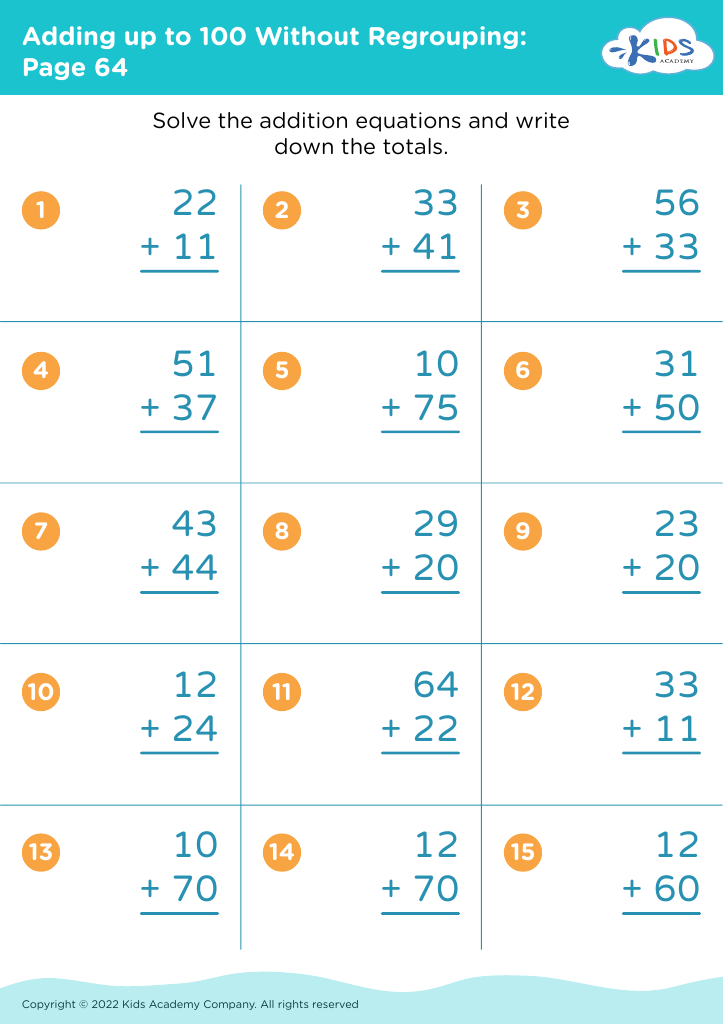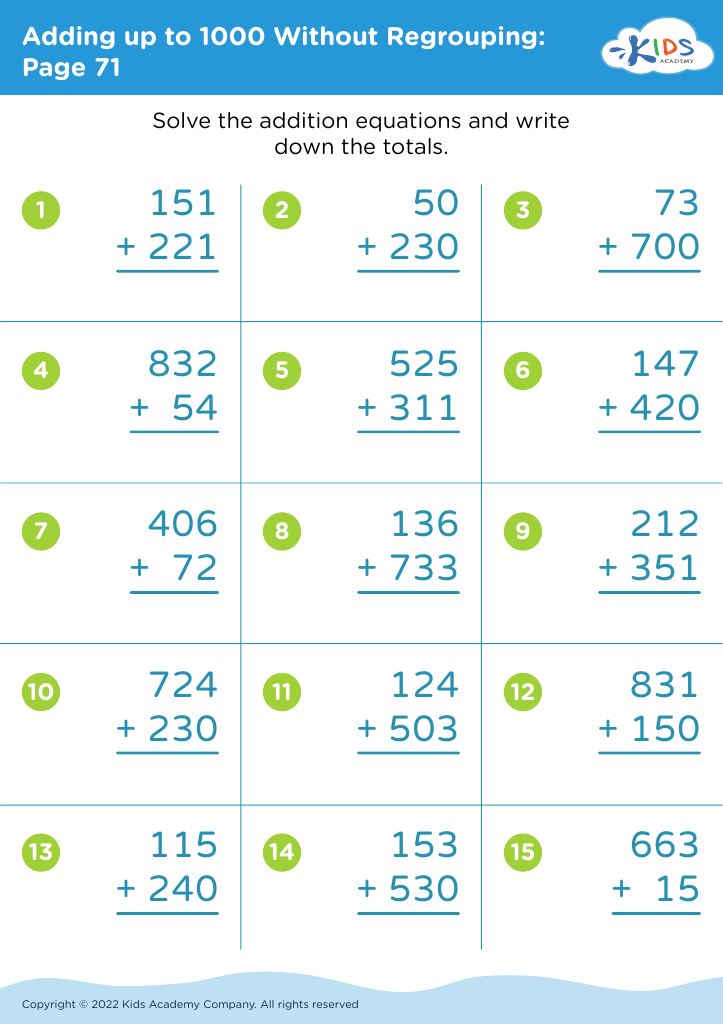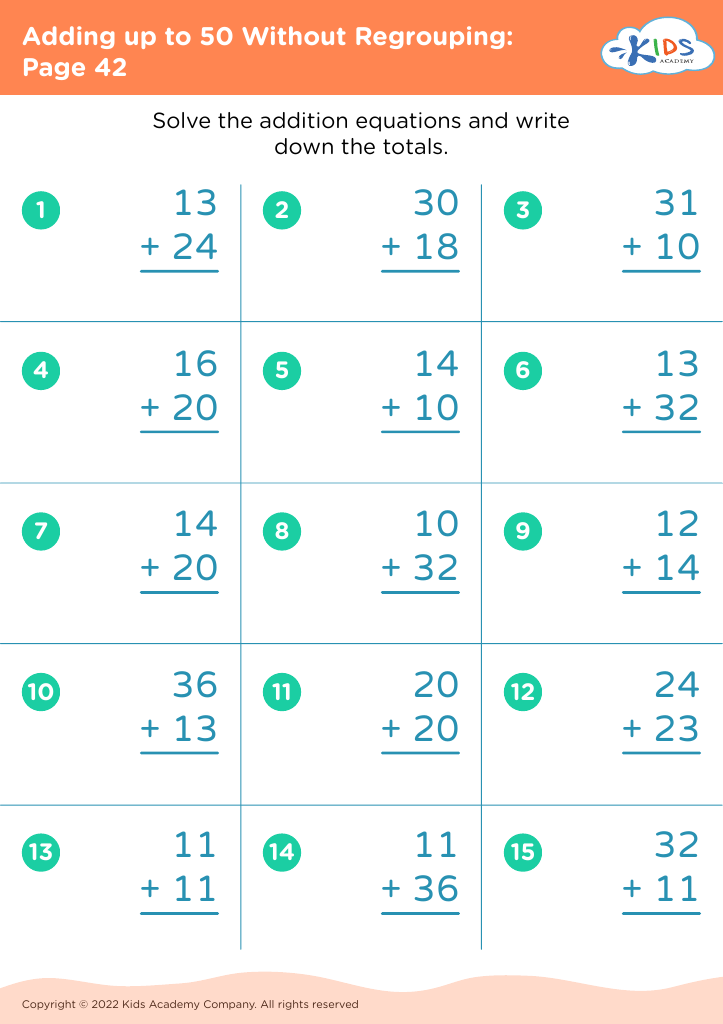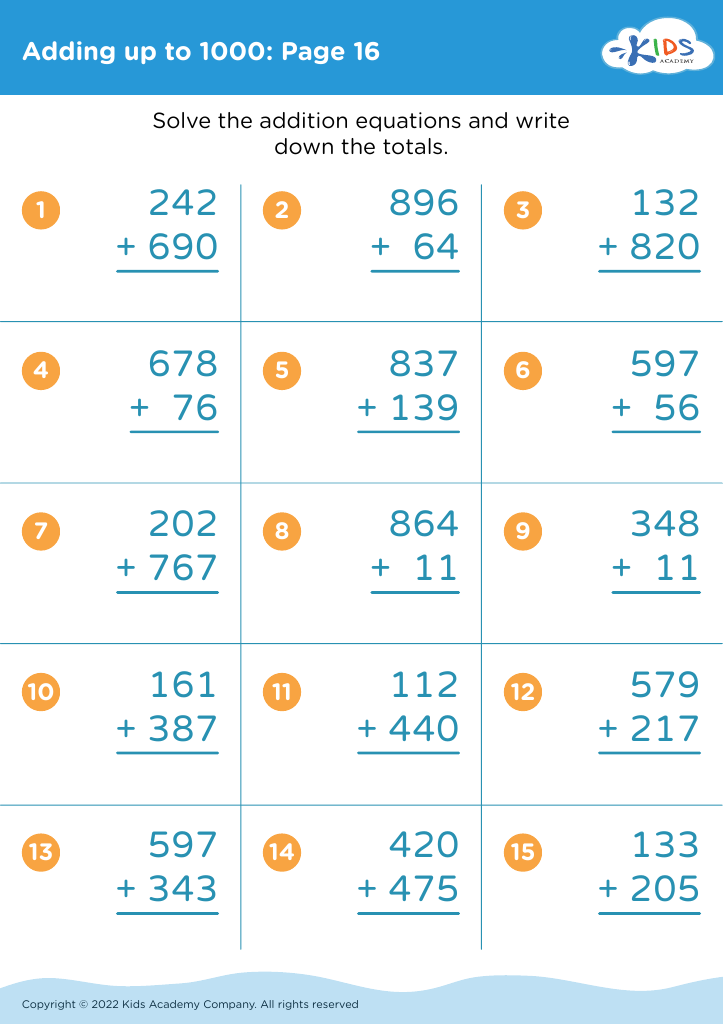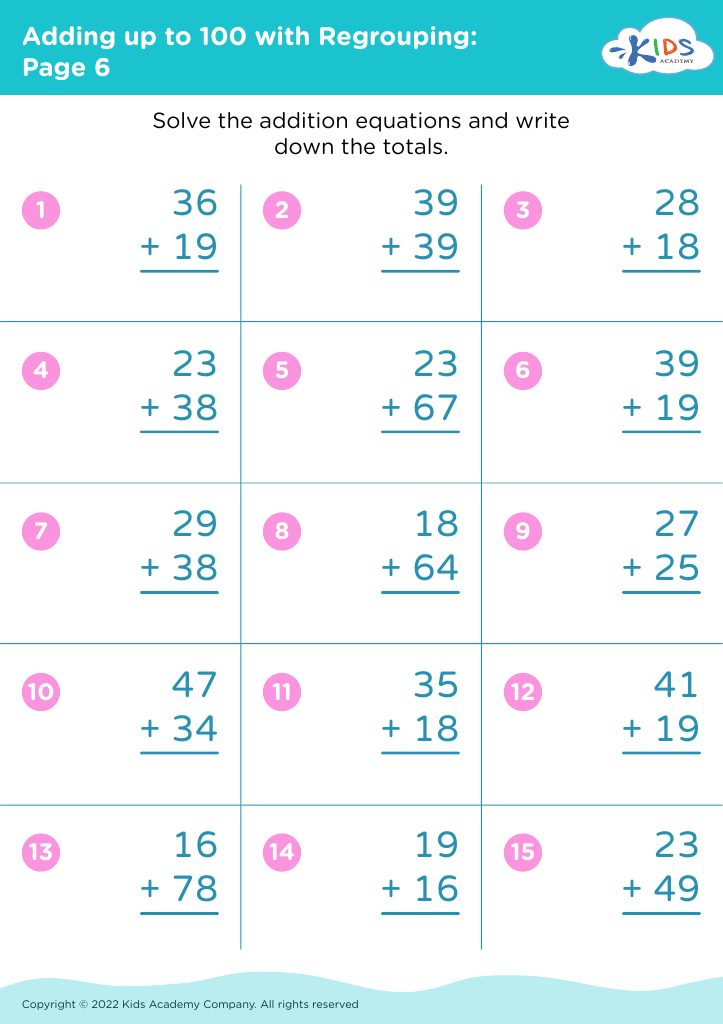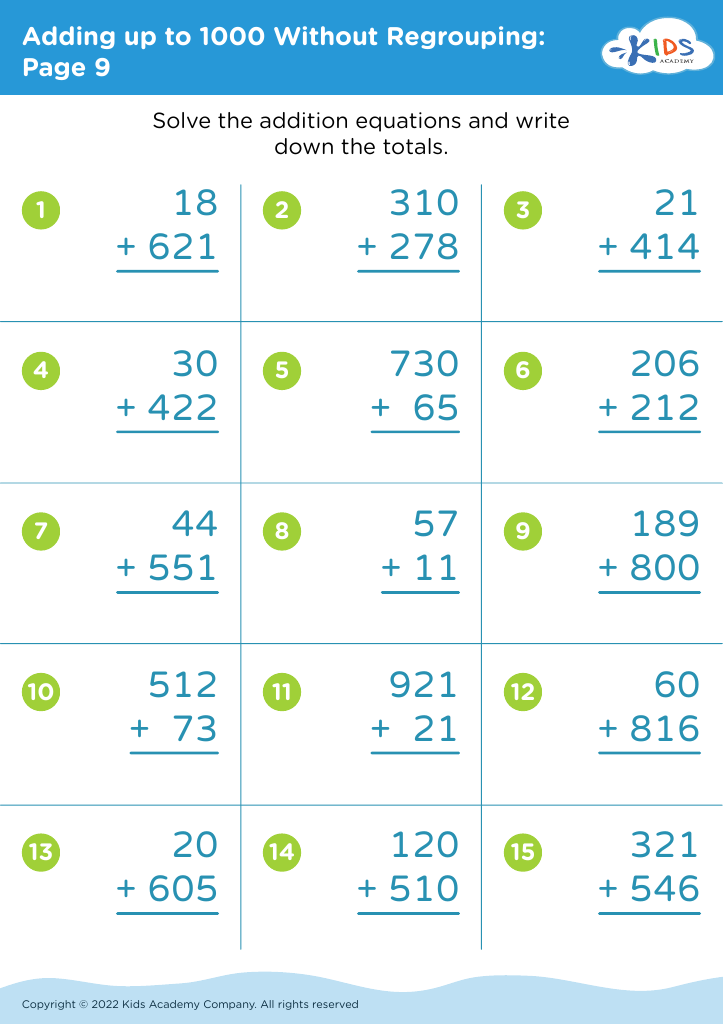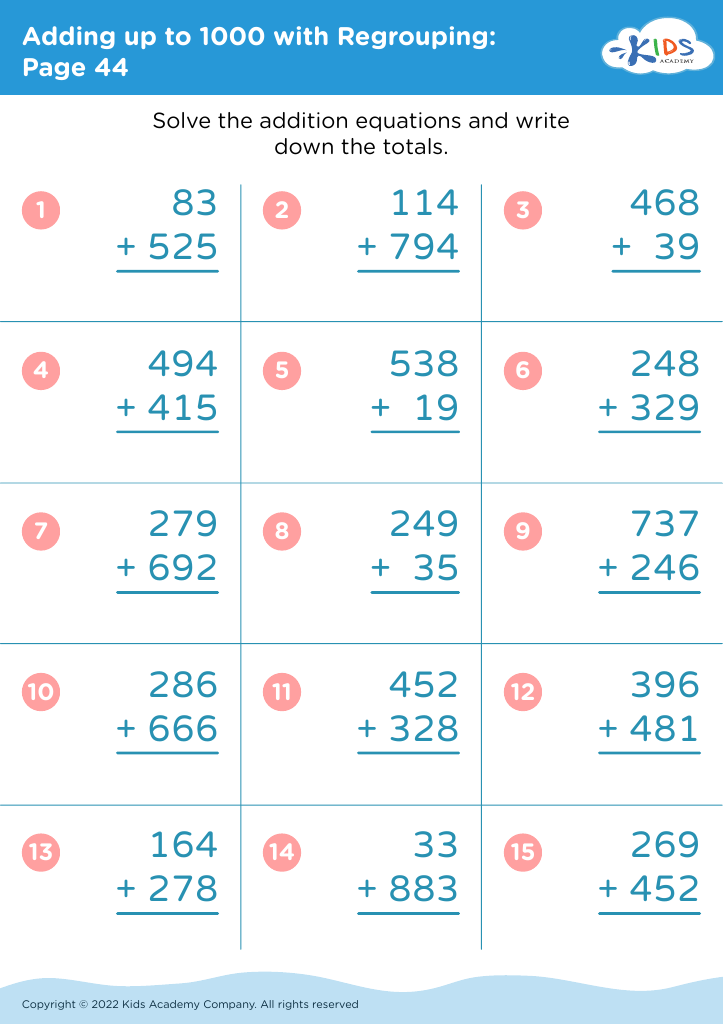Recognize patterns Worksheets for Kids
11 filtered results
-
From - To
Question/Answer
How does the mastery of the Recognize patterns skill affect a student's performance at an early age?
Mastery of the Recognize patterns skill at an early age significantly enhances a student's performance by improving their ability to predict, analyze, and solve problems efficiently. It lays a strong foundation for mathematical concepts, fosters critical thinking, and aids in the understanding of sequences and relationships in various subjects, thereby boosting overall academic achievement and cognitive development.
How to train the Recognize patterns skill in Grade 2 students learning about Adding up to 1000 Without Regrouping?
To train Grade 2 students in recognizing patterns in adding up to 1000 without regrouping, use sequential number exercises, focusing on patterns such as adding multiples of 10 and 100. Incorporate visual aids like number lines and charts, practice skip counting, and engage in interactive games that highlight numerical sequences and patterns to reinforce their understanding.
What are some effective activities to train students’ Recognize patterns skill when teaching them about Adding up to 1000 Without Regrouping?
Effective activities include: 1. Using number lines for visualizing addition. 2. Incorporating puzzles that require finding missing numbers in sequences. 3. Playing matching games with sums and components. 4. Implementing interactive whiteboard games for quick addition. 5. Conducting number pattern activities where students identify and continue patterns leading up to 1000. 6.
